Driving With A Tire Bulge – Causes, Solution And Prevention
Are you worried after spotting a bubble-like structure protruding out of your tire? It doesn’t seem that harmful, does it? You’re correct. It isn’t just ‘harmful,’ but also extremely hazardous.
Driving with a tire bulge is not recommended as it is unsafe and can be hazardous for you and the others on the road. It occurs due to weakened spots in the tire that expand under internal pressure. Driving with a tire bulge can possess a high risk of blowouts and adverse damage to the vehicle.
Read more to protect your tires from bulging and understand the reason behind the formation of tire bulges in the sidewall.
What Is A Tire Bulge?
A tire bulge is a protruding bubble-like structure on the tire that causes irreparable damage. It sticks out like a swollen spot on the tire’s sidewall or tread.
It is important to take immediate action and replace the tire as soon as possible to ensure safety on the road.
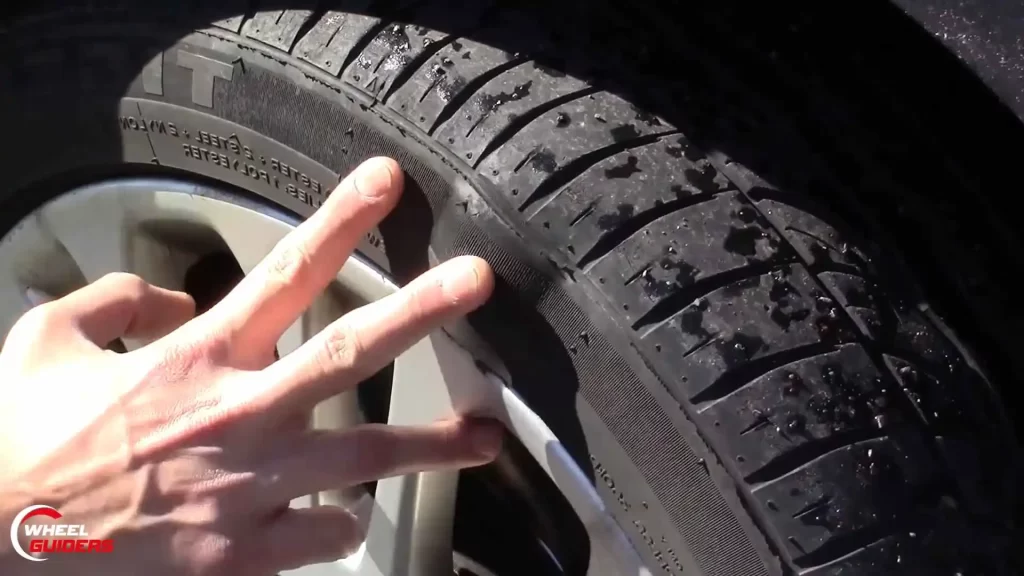
What Causes A Bulge In A Tire?
There can be numerous lines of reasoning behind tire bulging sidewall, but the most prevalent one is the impact sustained by the tire on hitting a pothole. Overloading the vehicle and driving swiftly on bumpy and rough roads are also a few of the main culprits behind a bulge on the tire’s sidewall.
In rare cases, the tire sidewall bubble can also occur due to a defective tire.
Poor tire health can also be responsible for a bulge on the tire’s sidewall. It is advisable to change the tires every five years, even if they are not worn. This helps to avoid the weakening of rubber layers and breakage of cords inside a tire sidewall bubble.
Refrain from letting a vehicle sit idle for a long time and keep its tires inflated to make them retain their flexibility. It reduces the risk of growing a bulge on the sidewall of the tire. Check the tires before using a vehicle sitting idle for a very long time to reduce the chances of unexpected tire failure.
Park under a shadow to avoid exposing the tires to a lot of sunlight to prevent heat build-up inside of the tire sidewall bubble. They might look small and seemingly harmless, but, in turn, they can go on to be exceedingly dangerous.
How To Prevent Tire Bulges
It is said that prevention is better than cure. But what to do when there is no cure? Prevention becomes the mandatory option.
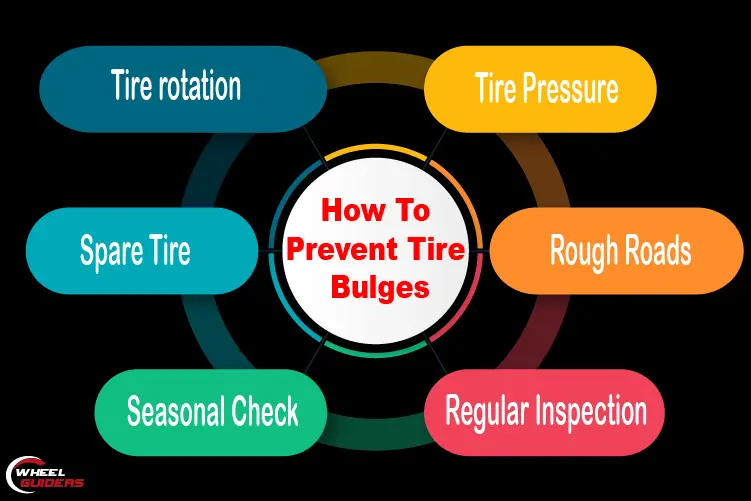
Tire sidewall bubbles are not totally preventable, but they can be avoided if the tires are taken care of enough. Here are the top six ways to avoid tire bulging –
Tire Pressure
Keep the air pressure in the tires at the recommended level. Make a habit of checking and maintaining the air pressure every time you refill the fuel tank so that you don’t miss out.
Rough Roads
Refrain from driving aggressively at high speeds, frequently, especially on rough roads, potholes and debris-filled roads.
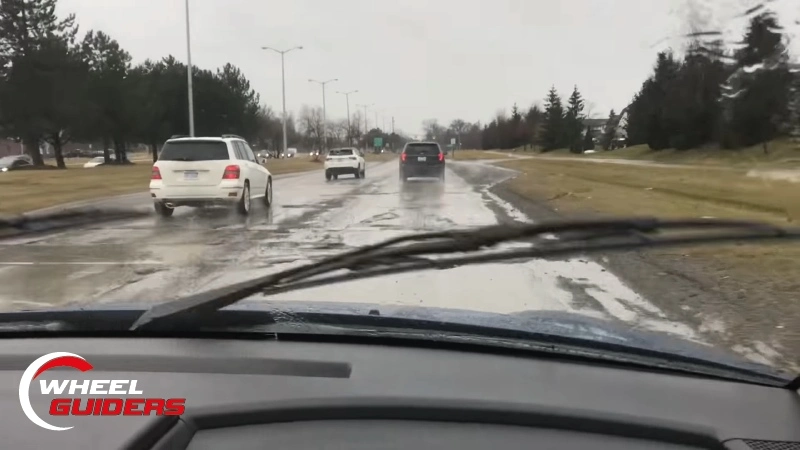
Regular Inspection
Inspect the tires regularly. There can be times when the driver is unable to realise that there is a bulge in the sidewall of the tire while driving. You must visually and physically inspect the tire. Check them in broad daylight or use a strong torchlight.
Seasonal Check
In summers, the Air inside the tires expands where, as in winters, the tires contact. Expanding and contracting the tires can cause tires to bulge if the tires are not maintained to the proper recommended PSI.
Spare Tire
Having a donut tire in the vehicle is very crucial. It provides safety and convenience at the time of tire failure. Having a spare tire can allow you to change the tire on the spot and continue driving safely, rather than being stranded on the side of the road.
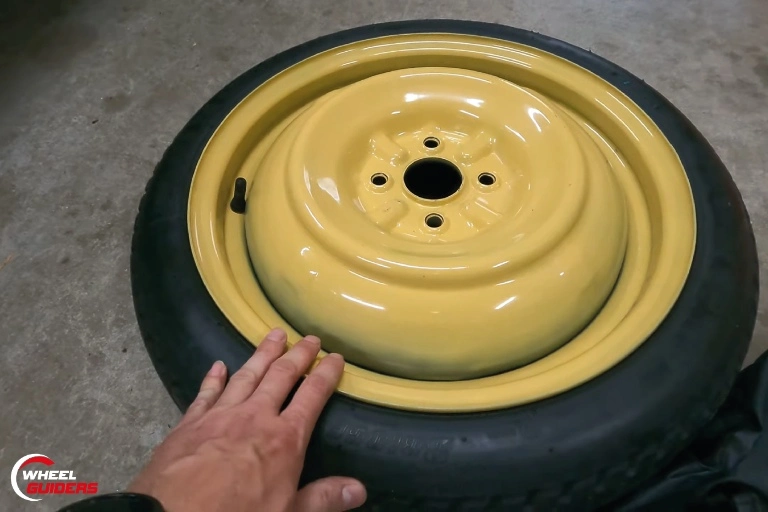
Tire rotation
The tire should be rotated every 5000 – 7500 miles to keep the wear even on all tires instead of wearing some tires more than others. It results in a safe and trouble-free ride. It lowers the risk of punctures and tire failures as well.
One cannot totally prevent the tire from bulging sidewall, but taking care of tire health can go a long way to avoid rubber damage and, in turn, help in reducing the chances of getting a bulge in the sidewall of a tire. Driving safety promises a reduction in road accidents. Tire health can never be ignored if one wants to ensure safety, especially while driving with a tire bulge
Is It Okay To Drive With A Bulge In My Tire?
Are you wondering whether it would be okay to ignore the bulge in the tire that you spotted in the tire of your vehicle and drive your vehicle anyways? The answer is no, and it is not safe.
As driving with a tire bulge can be fatal as the heat from the friction between the tire and the road would weaken the swollen spot further, and the risk of a tire blowout would multiply.
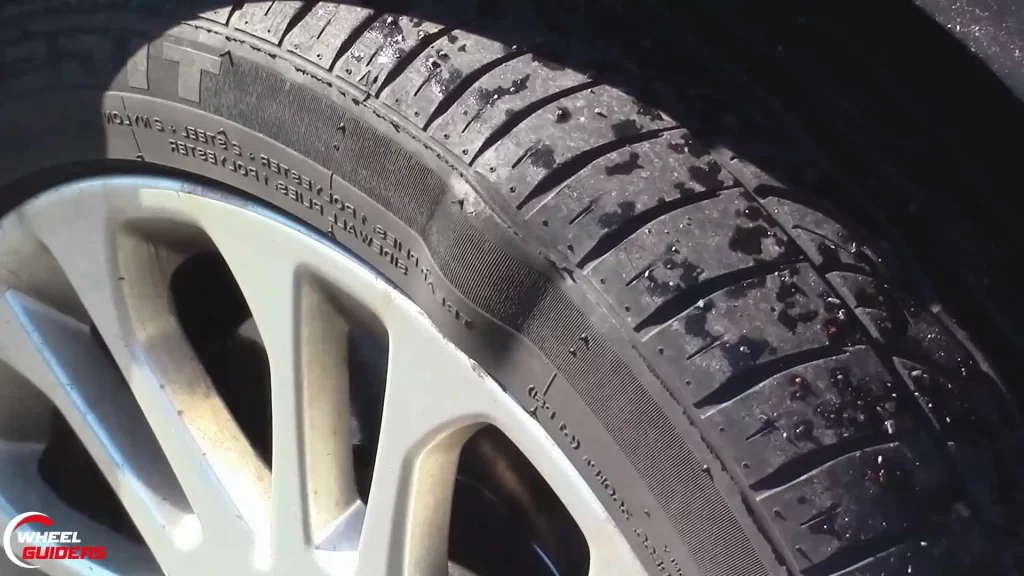
If you have no option other than driving with a tire bulge, then restrain yourself from stressing the damaged tire by driving slowly and avoiding brakes.
For your safety as well as for that of others, avoid driving with a tire bulge unless and until it is necessary, and the distance that you have to cover is short.
For instance, on impact and heat buildup, a bulge forms on the tire of your car. If you are stuck on a freeway with no help other than driving to the nearest mechanic shop, you have no option. Then, you must take extreme precautions while driving.
REMEMBER: To minimise the risk of heat buildup and prevent further damage when driving with a tire bulge, it’s recommended to maintain a slow and steady speed, minimize braking, and take regular breaks every few minutes
What Causes A Bulge In The Tire Sidewall?
Avoid driving at excessive speed on uneven roads or rough roads, especially near construction sites that are full of debris, as it can lead to irreversible damage to the tires.
There are many rubber layers and cords inside a tire, some of which can weaken and break in harsh conditions like crossing railroad tracks or the tire hitting potholes or stones or sharp objects at wrong angles.
Air will seep into the harmed spot and disrupt the tire’s internal structure. The longer the bulge in the sidewall stays unattended, the larger it will grow.
Damaged tires, especially with a tire sidewall bubble, would eventually lead to an increased number of road accidents which could’ve been easily prevented by replacing harmed tires.
The heavier the vehicle, the more the chances of tire damage infliction.

Some truck owners tend to overburden their trucks to make more profit. It makes the vehicle heavier, and the risk increases many folds.
This is why truck tires are more prone to bulge in the sidewall of their tires.
Is A Bulge In A Tire Dangerous?
When it comes to driving, safety is a must. Tire bulging sidewall can lead to tire failures without proper monitoring. A tire blowout usually happens while driving with a tire bulge aggressively.
A loud bursting sound and the vehicle would get pulled to one side with a forceful jerk as the driver might lose control of it. It would put both the driver’s and the passengers’ lives in danger. If a vehicle changes its course so abruptly, the speeding vehicles behind it have a high chance of colliding with it.
Can You Fix a Tire Bulge?
Fixing a tire bulge is not recommended. No professional tire expert would suggest doing it. A tire bulge occurs when the tire’s internal structure, such as the belts or sidewall, gets ruptured. Driving with a tire bulge should be avoided at all costs.
Once a tire gets a bulge, it is irreparable. Replace it as quickly as possible and avoid driving the vehicle without changing the damaged tire first. Bulged tires are hazardous and can also adversely affect and damage the vehicle.
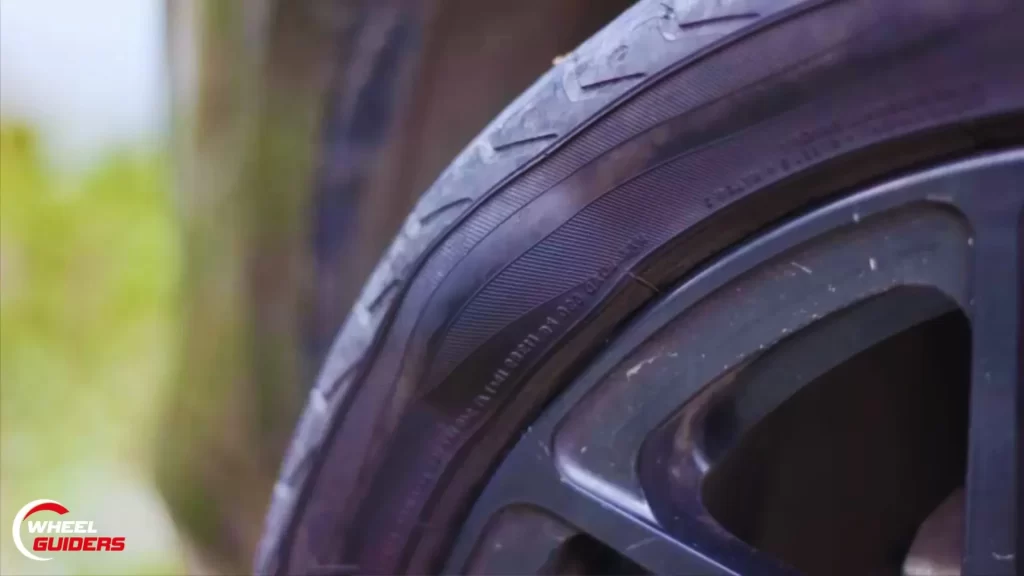
Rounding Up
Air has seeped into the sidewall or tread of your tire because of driving aggressively in harsh conditions, and wearing your tires or a tire sidewall bubble can also be a manufacturing defect.
You must replace your tire as soon as possible and avoid using that vehicle until and unless you’ve changed the damaged tire. If you must drive, then it’s recommended to drive the vehicle at a slower speed and avoid frequent braking when possible. Total prevention of a tire bulging sidewall is not possible, but by taking necessary precautions, we can avoid it, and the accidents caused because of it.
Once the tire gets a swollen spot, you must replace the whole tire without further ado. The internal damage done is irreparable.
Ever since a child, I have seen my father, who would regularly check the tires of his car. So much so that, even before we started the journey, he would walk around the car and check for any visible problem.
With his discipline towards the tires and by traveling miles around the world, I have learned many lessons making me the man I am today. Checking tires regularly keeps the passengers, vehicles and people around us safe. It also provides the vehicle with the right amount of grip, traction and smoothness to provide optimal comfort and fuel efficiency.
Maintaining and inspecting tires regularly cannot just help you prevent tire bulges, but it can also provide you with the following benefits –
